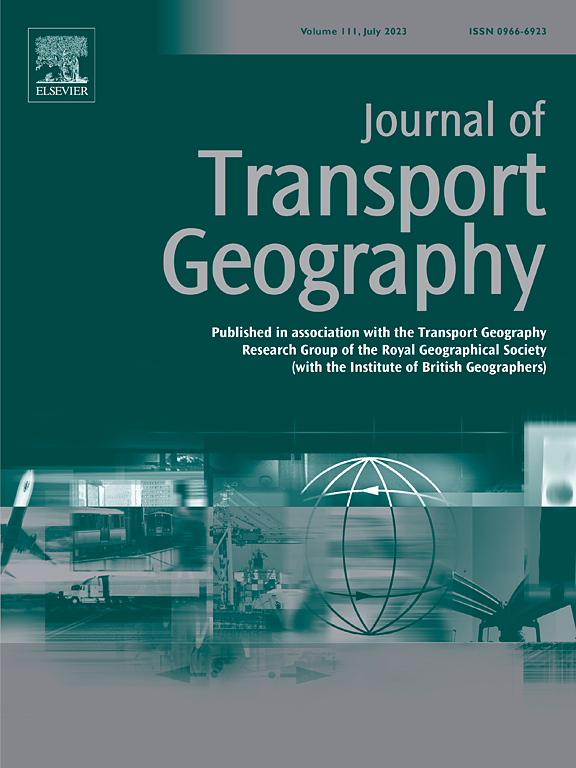A walker's paradise Ain't a driver's hell: Evaluating the causal effect of temporary road pedestrianization on traffic conditions of surrounding roads
IF 5.7
2区 工程技术
Q1 ECONOMICS
引用次数: 0
Abstract
This study uses a natural experiment approach to evaluate the causal effect of three regular road pedestrianization schemes in Central Tokyo on traffic conditions in surrounding areas. Cross-sectional traffic volume data collected by the Metropolitan Police Department via traffic counters was used as the dependent variable and causal effect evaluation was done via a difference-in-differences (DID) approach, where the temporal pedestrianization of a street was used as the treatment of interest. We take advantage of (1) the variability in pedestrianization execution days and (2) the seasonal variability in pedestrianization time periods, to define the natural experiments. Furthermore, three different buffer areas of 500 m, 750 m and 1000 m were used to evaluate the sensitivity of effect estimates to the definition of the impact area. No evidence of severe increases in traffic volume in the surrounding areas of pedestrianized roads was found, suggesting that human-centric network design is not necessarily a zero-sum game between pedestrians and drivers. While small increases in traffic volume of around 5 % and slight increases in congestion near pedestrianized links can be expected, these changes are unlikely to translate into worsening traffic conditions and can be managed by the existing road network in Tokyo.
步行者的天堂不是司机的地狱:评估临时道路行人专用化对周围道路交通状况的因果影响
本研究采用自然实验方法,评估东京市中心三种常规道路行人专用化方案对周边地区交通状况的因果效应。大都会警察局通过交通计数器收集的横断面交通量数据被用作因变量,因果效应评估通过差分法(DID)进行,其中街道的时间步行化被用作感兴趣的处理。我们利用(1)步行区执行日期的可变性和(2)步行区时间段的季节性可变性来定义自然实验。此外,采用500 m、750 m和1000 m三个不同的缓冲区来评估影响评估对影响区域定义的敏感性。没有证据表明行人专用道周边地区的交通量有明显增加,这表明以人为中心的网络设计不一定是行人和司机之间的零和游戏。虽然预计交通量将小幅增加5%左右,行人专用区附近的拥堵也会略有增加,但这些变化不太可能转化为交通状况的恶化,可以通过东京现有的道路网络进行管理。
本文章由计算机程序翻译,如有差异,请以英文原文为准。
求助全文
约1分钟内获得全文
求助全文
来源期刊

Journal of Transport Geography
Multiple-
CiteScore
11.50
自引率
11.50%
发文量
197
期刊介绍:
A major resurgence has occurred in transport geography in the wake of political and policy changes, huge transport infrastructure projects and responses to urban traffic congestion. The Journal of Transport Geography provides a central focus for developments in this rapidly expanding sub-discipline.
 求助内容:
求助内容: 应助结果提醒方式:
应助结果提醒方式:


